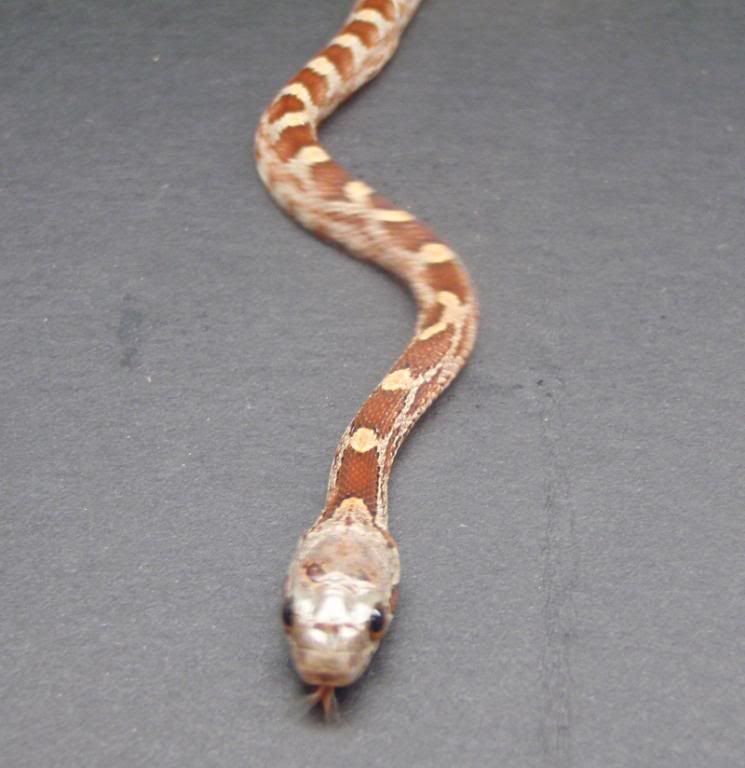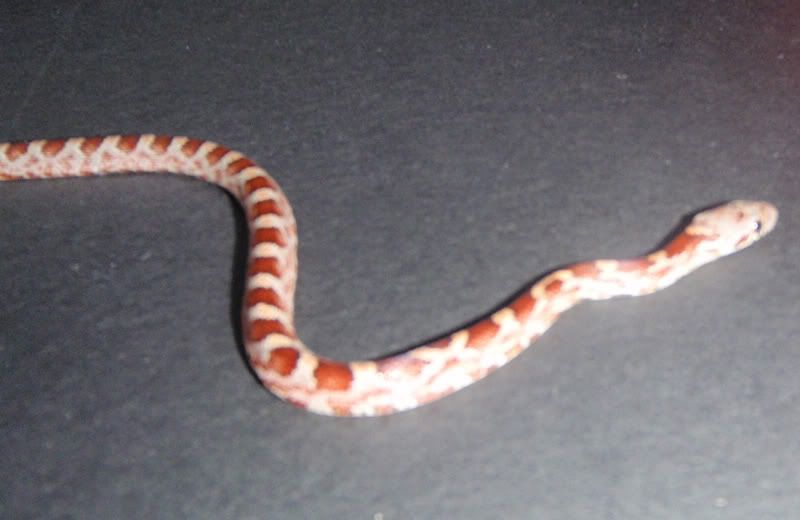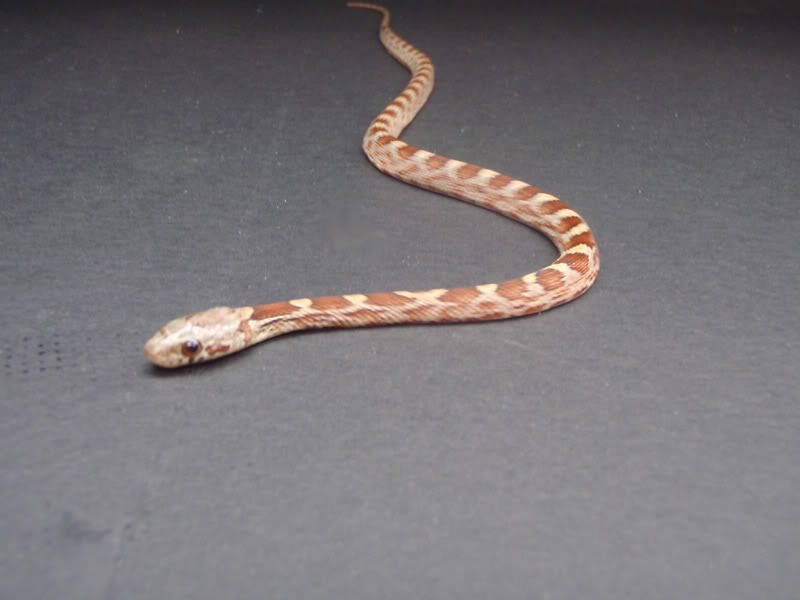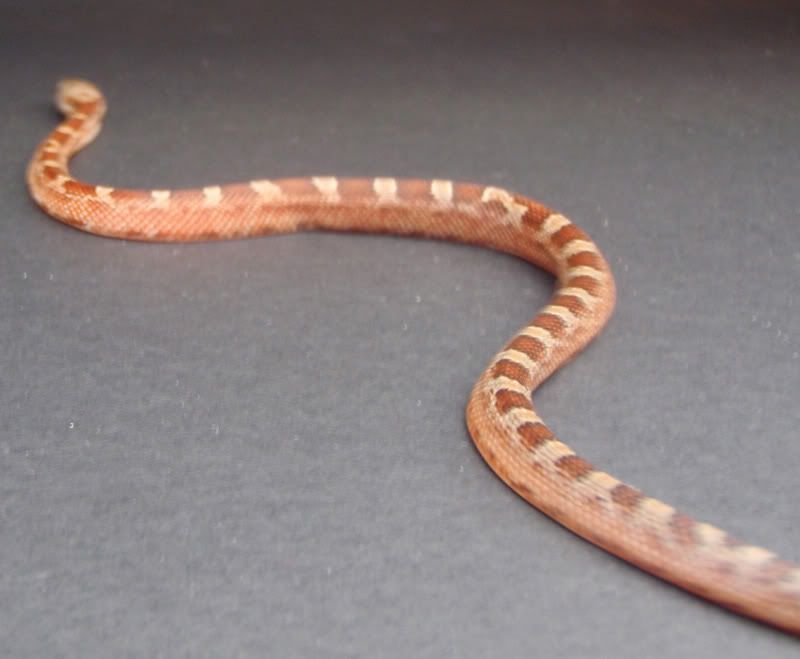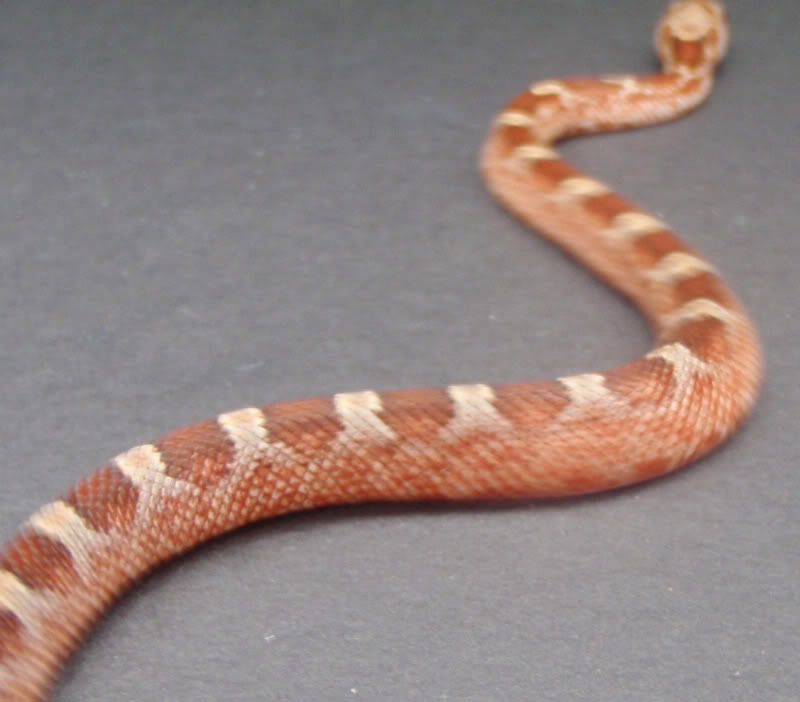There seems to be some slight confusion about the terminology. "Bloodred" is a linebred look developed from the diffused gene to display a high amount of diffusion and intense red coloration...thus the term "Bloodred". Since this is technically a line-bred trait, technically a snake cnanot be het. bloordred.
However...the gene that creates the bloodred morph is "diffused" which is the pattern mutation that causes the side pattern to disappear to varying degrees, and the belly checks to vanish. A snake can absolutely be het. diffused.
The confusion comes into play when people interchange the terms "bloodred" and "diffused". Some people will call any snake homo. for diffused a "bloodred", when
technically this isn't necessarily true. Technically speaking, a bloodred is the linebred, quintessential diffused snake...DEEEEEEEP red coloration, and HEAVY diffusion. A snake can be diffused without being a bloodred, but a bloodred is always diffused. Make sense?
Now...these are very strict definitions, and not everyone follows these definitions. In fact...I'm willing to bet that a few people are gonna slam me for saying this. So be it. I get slammed for saying a lot of things. Check the 2008 Cornsnake Morph Guide, read the definitions of "Diffused" and "Bloodred"...which, of course, I will again be slammed for using it as a resource, but...c'est la vie...
Quoted from the 2008 CMG:
Bloodred-Diffused plus selective breeding for borderless and extreme red.
Diffused-Homozygous for diffusion at the diffused locus.
In other words...Bloodred is a linebred trait, which means a snake cannot be het. bloodred. Diffusion is a single recessive gene, which means a snake absolutely CAN be het. for diffusion. Any snake that is being sold or bought as "het. bloodred" is actually, technically het. diffused...
All of the snakes you pictured above are absolutely GORGEOUS examples of the diffused trait, however, if the color is true, I would not yet call them "bloodred", as they are not very deeply red, even though they have absolutely STUNNING diffusion. As they amture and the colors "come in", they may develope into bloodreds, at which point you will have an awesome start on a future bloodred project. However, I would refrain from calling them "bloodred" until you have an established line of bloodreds being consistantly produced.
Just my $.02...

